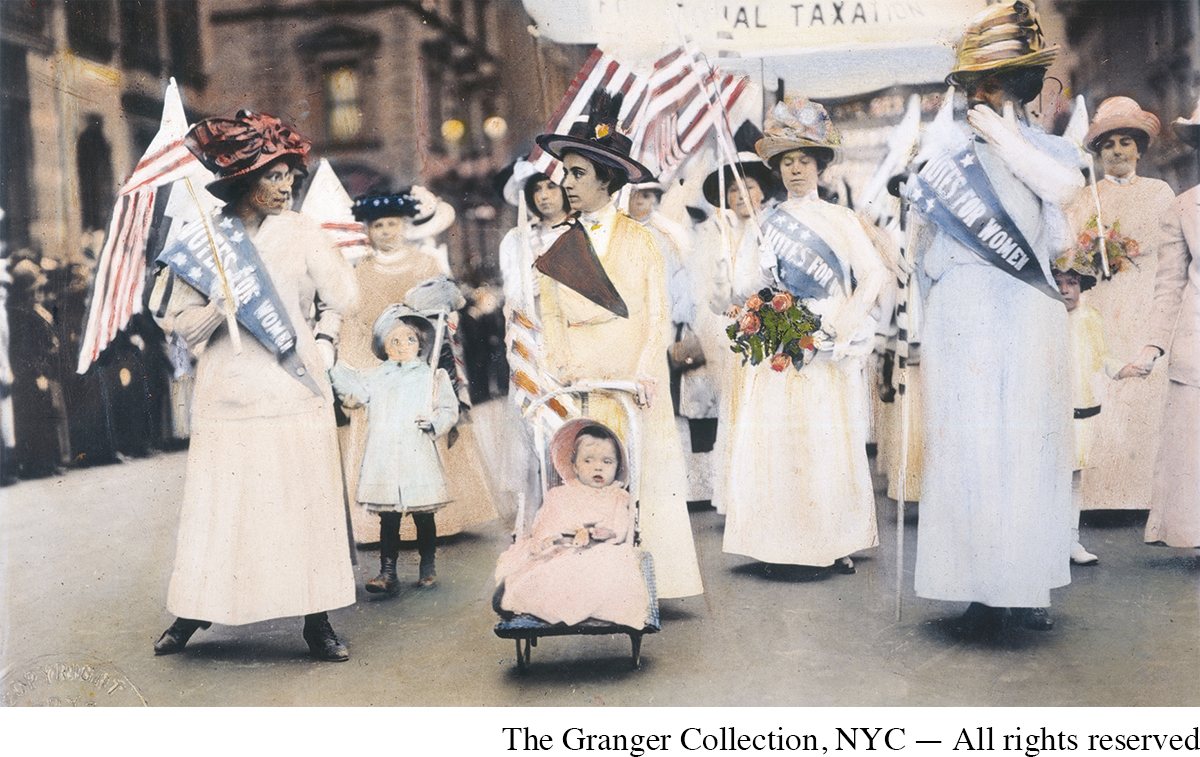Feminist Beginnings
A third echo of the Atlantic revolutions lay in the emergence of a feminist movement. Although scattered voices had earlier challenged patriarchy, never before had an organized and substantial group of women called into question this most fundamental and accepted feature of all preindustrial civilizations—
Significance
What were the achievements and limitations of nineteenth-
Thinkers of the European Enlightenment had challenged many ancient traditions, including on occasion that of women’s intrinsic inferiority (see “Science and Enlightenment” in Chapter 15). The French writer Condorcet, for example, called for “the complete destruction of those prejudices that have established an inequality of rights between the sexes.” The French Revolution then raised the possibility of re-
Within the growing middle classes of industrializing societies, more women found both educational opportunities and some freedom from household drudgery. Such women increasingly took part in temperance movements, charities, abolitionism, and missionary work, as well as socialist and pacifist organizations. Some of their working-
From the beginning, feminism became a transatlantic movement in which European and American women attended the same conferences, corresponded regularly, and read one another’s work. Access to schools, universities, and the professions were among their major concerns as growing numbers of women sought these previously unavailable opportunities. The more radical among them refused to take their husbands’ surname or wore trousers under their skirts. Elizabeth Cady Stanton published a Women’s Bible, excising the parts she found offensive. As heirs to the French Revolution, feminists ardently believed in progress and insisted that it must now include a radical transformation of the position of women.
By the 1870s, feminist movements in the West were focusing primarily on the issue of suffrage and were gaining a growing constituency. Now many ordinary middle-

That movement had some effect. By 1900, upper-
Beyond these concrete accomplishments, the movement prompted an unprecedented discussion about the role of women in modern society. In Henrik Ibsen’s play A Doll’s House (1879), the heroine, Nora, finding herself in a loveless and oppressive marriage, leaves both her husband and her children. European audiences were riveted, and many were outraged. Writers, doctors, and journalists addressed previously taboo sexual topics, including homosexuality and birth control. Socialists too found themselves divided about women’s issues. Did the women’s movement distract from the class solidarity that Marxism proclaimed, or did it provide added energy to the workers’ cause? Feminists themselves disagreed about the proper basis for women’s rights. Some took their stand on the modern idea of human equality: “Whatever is right for a man is right for a woman.” Others, particularly in France, based their claims more on the distinctive role of women as mothers. “It is above all this holy function of motherhood,” wrote one advocate of “maternal feminism,” “which requires that women watch over the futures of their children and gives women the right to intervene not only in all acts of civil life, but also in all acts of political life.”25
Not surprisingly, feminism provoked bitter opposition. Some academic and medical experts argued that the strains of education and life outside the home would cause serious reproductive damage and as a consequence depopulate the nation. Thus feminists were viewed as selfish, willing to sacrifice the family or even the nation while pursuing their individual goals. Some saw suffragists, like Jews and socialists, as “a foreign body in our national life.” Never before in any society had such a passionate and public debate about the position of women erupted. It was a novel feature of Western historical experience in the aftermath of the Atlantic revolutions.
Like nationalism, a concern with women’s rights spread beyond Western Europe and the United States, though less widely. An overtly feminist newspaper was established in Brazil in 1852, and an independent school for girls was founded in Mexico in 1869. A handful of Japanese women and men, including the empress Haruko, raised issues about marriage, family planning, and especially education as the country began its modernizing process after 1868, but the state soon cracked down firmly, forbidding women from joining political parties or even attending political meetings. In Russia, the most radical feminist activists operated within socialist or anarchist circles, targeting the oppressive tsarist regime. Within the Islamic world and in China, some modernists came to believe that education and a higher status for women strengthened the nation in its struggles for development and independence and therefore deserved support. (See Zooming In: Kartini for an example from the Dutch East Indies.) Huda Sharawi, founder of the first feminist organization in Egypt, returned to Cairo in 1923 from an international conference in Italy and threw her veil into the sea. Many upper-
Nowhere did nineteenth-